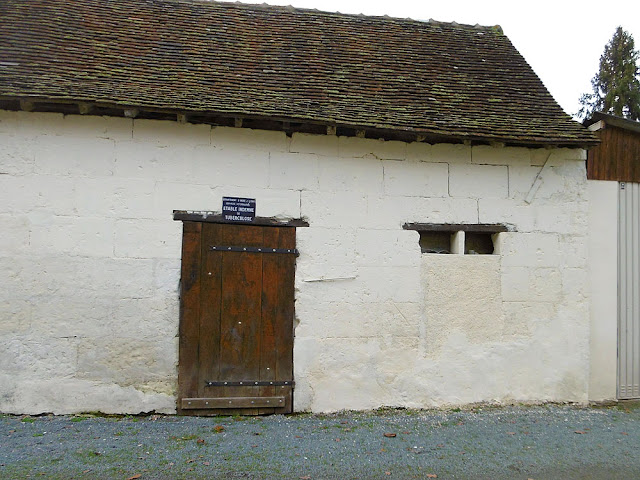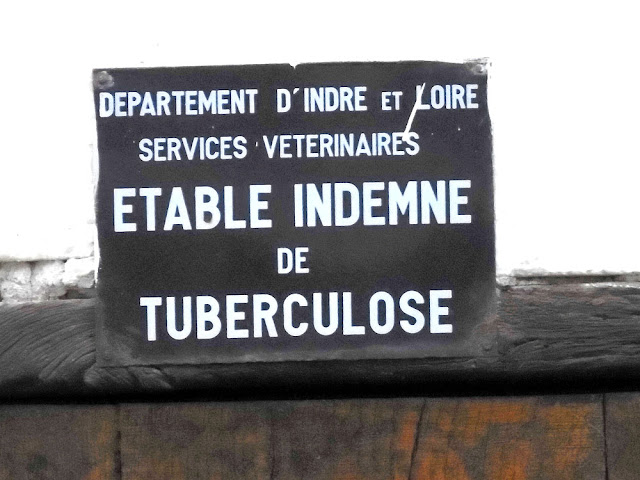By the late 19th century bovine tuberculosis was the scourge of the dairy industry in France, the most important disease of cattle in the country, and a threat to public health. Tuberculosis is a group of closely related zoonotic diseases, caused by Mycobacteria spp, and can affect and transmit between a wide variety of mammals, including humans. After the First World War, with the decline of horses as the primary power source on farms, many rural vets kept their practices going by regularly monitoring cattle herds for tuberculosis. By the 1920s the talk was of eradicating the disease in cattle and it was imperative to provide the market with disease free milk and meat. Pasturisation of milk, which had been practiced since the late 19th century, helped a lot with preventing contaminated milk being consumed, but did not eradicate the root problem.
 |
| This barn on the Cher has a plaque from the 1950s or 60s declaring it TB free. |
Cows do not necessarily show disease symptoms when they catch TB. Often the first indication that they have the disease is a loss of productivity ie they start producing less milk per day. Infected animals can pass the disease to other herd members, humans and wild animals. If infection amongst the cattle herd is controlled (by culling) any infection that has been passed to wild deer or badgers, for example, will die out over time. France is lucky not to have the disease entrenched in the wild populations of badger as they do in Britain, or wild boar as they do in Spain. However, significant numbers of Red Deer and Wild Boar in France are known to carry TB, and population density can be an issue.
After much hard work and a concerted campaign from the late 1950s onwards, France was finally declared bovine tuberculosis free in 2001, one of the few countries globally to have succeeded (Australia is another). There are still about a hundred outbreaks a year, but these are contained in their clusters and eradicated. There are several persistent hot spots for the disease, with ever increasing numbers of outbreaks that need to be dealt with, especially within the free ranging fighting bulls of the Camargue. To retain disease free status France must keep outbreaks at below 0.1% of the national herd annually.
 |
| The sign says that the Indre et Loire County Veterinary Service has declared this stable tuberculosis free. |
The co-ordinated national fight against bovine TB in France began in 1954, following an unsuccessful campaign begun in 1933 which left farmers to self-regulate. At the beginning of the campaign about a quarter to a third of French herds were infected. A co-ordinated campaign of this nature was unknown at the time and its eventual success led to other similar approaches to other diseases. The disease is controlled, even today when there is an outbreak, by culling infected cows. In about 50% of cases this results in whole herds being eliminated. To earn the TB free certification farms must not only stay disease free but demonstrate that they are respecting the sanitary regulations for controlling the spread of the disease too. Today the systematic testing of animals has been abandoned in favour of annual inspections to check that farms are adhering to the rules on food hygiene, risk factor management, and sanitary conditions.
We are also on Instagram, so check us out to see a regularly updated selection of our very best photos.

No comments:
Post a Comment